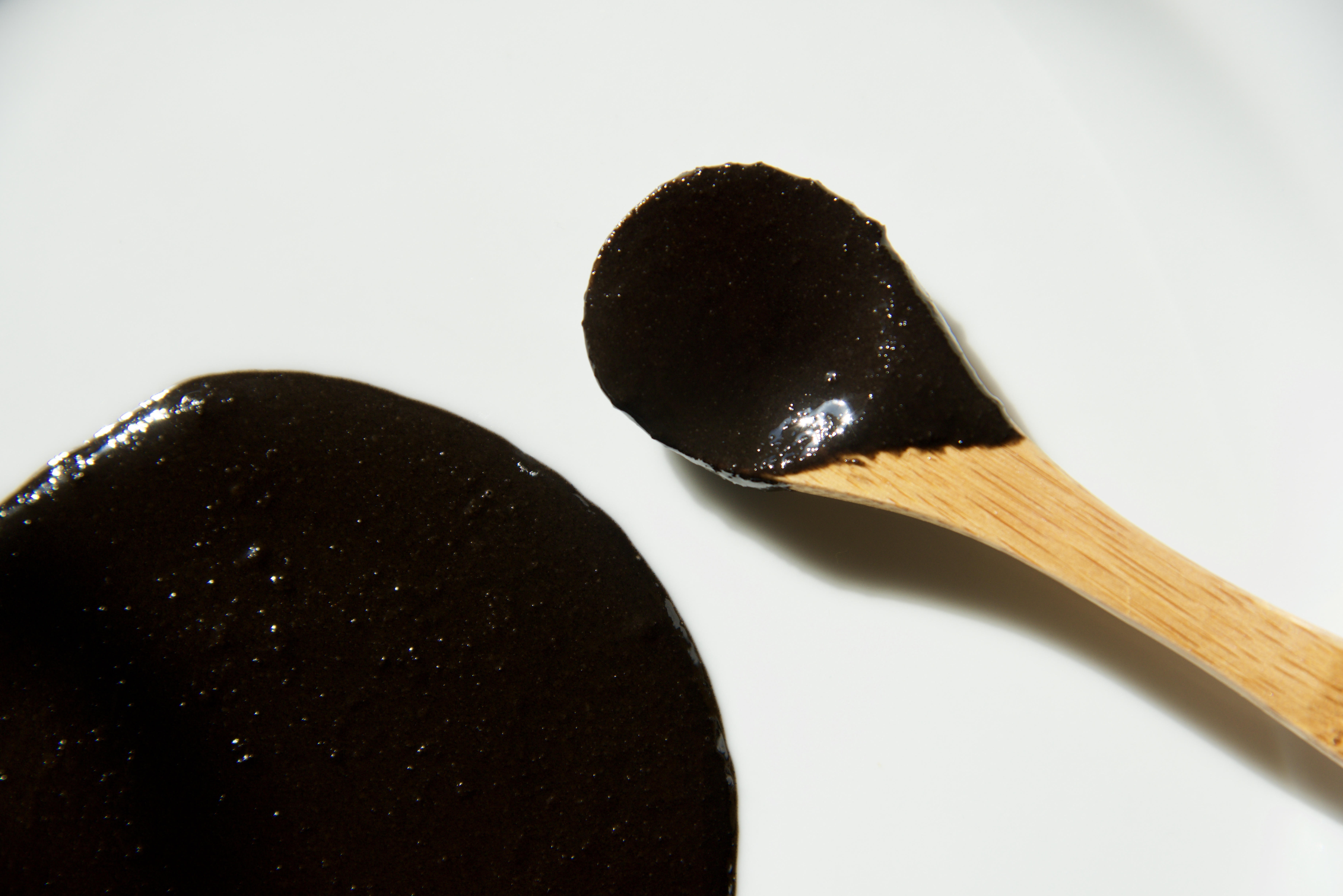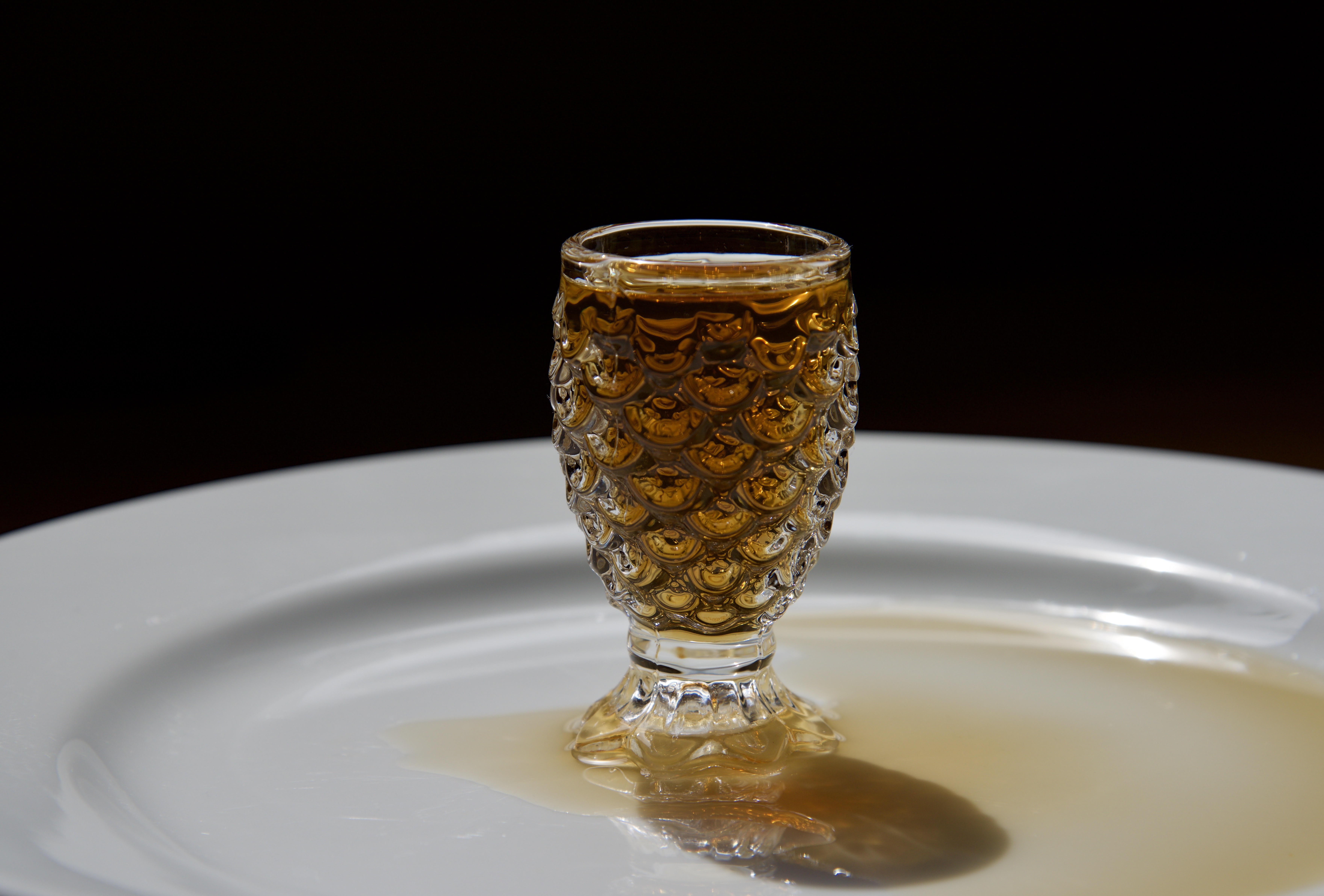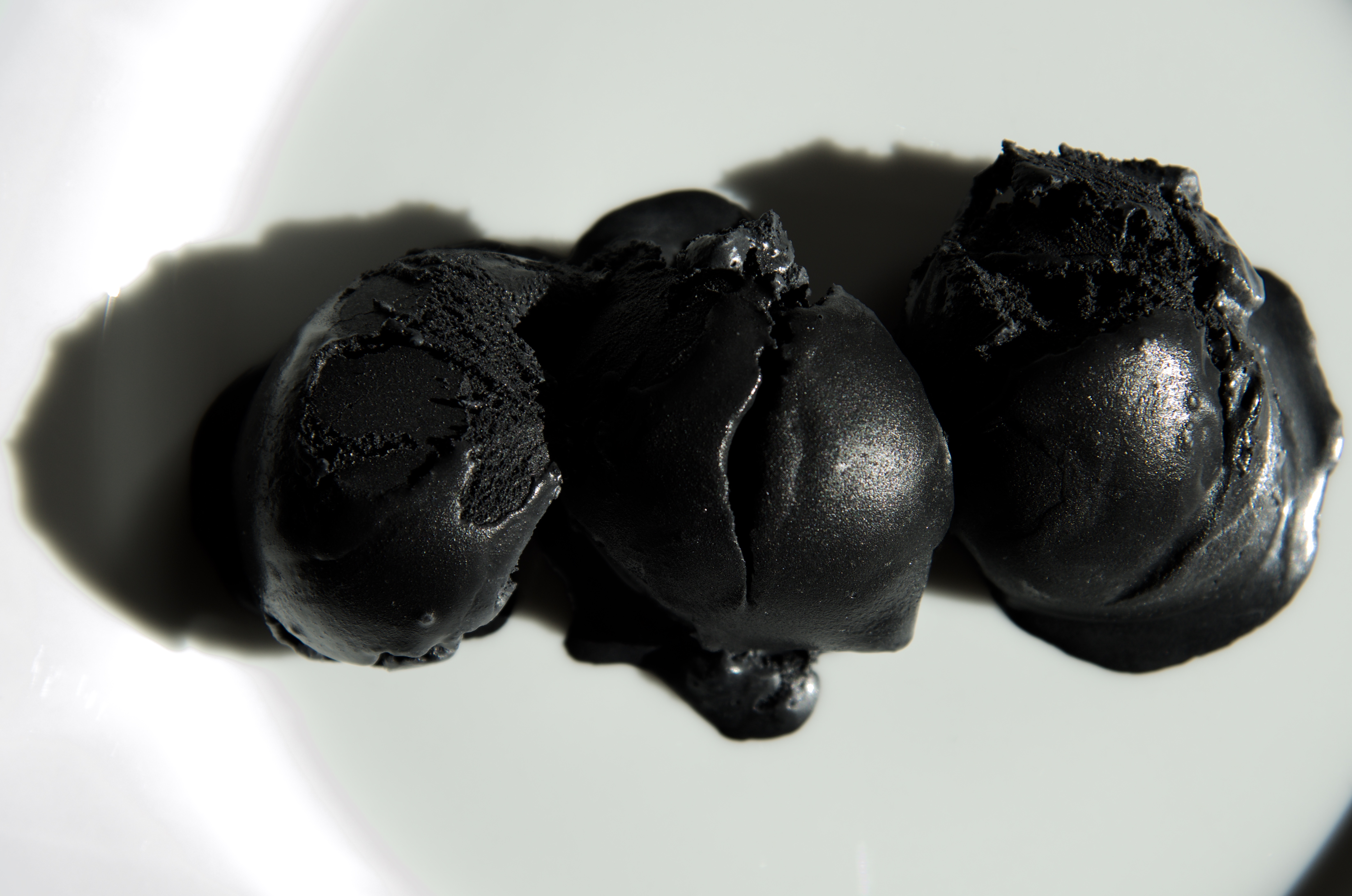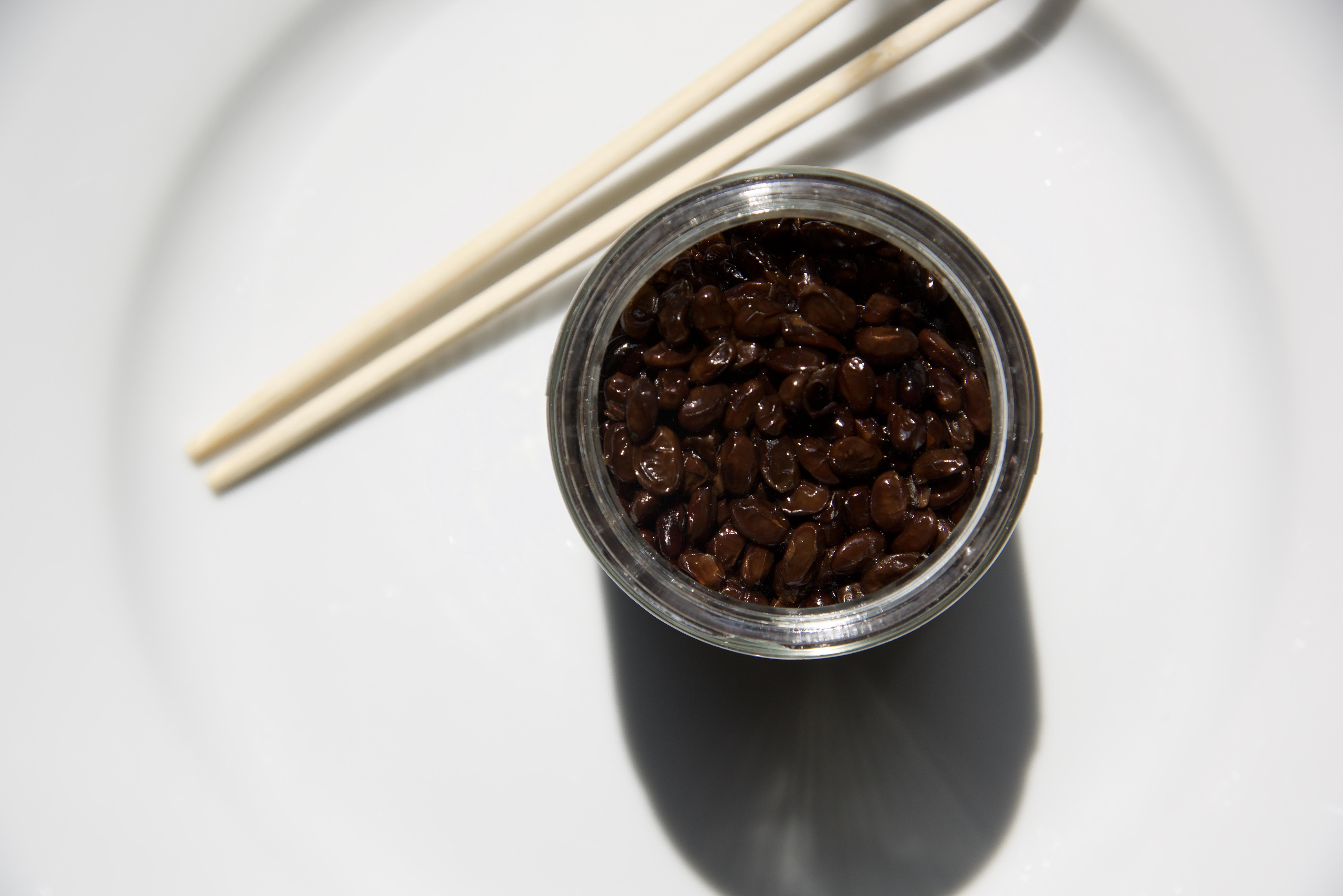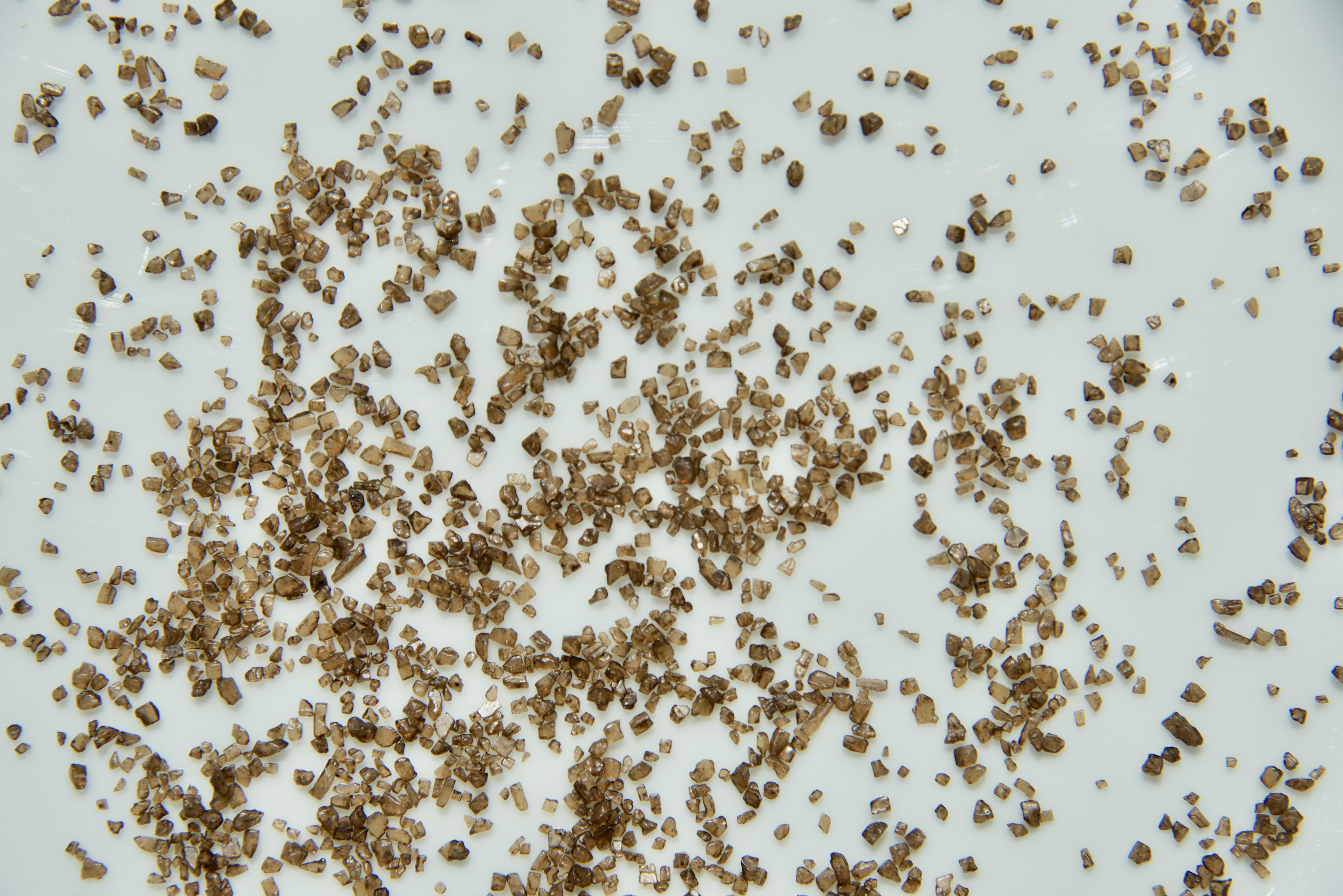All Black Everything: A New Wave of #Goth Superfoods
“Eat The Rainbow” is often an overused phrase in the world of nutrition– but the fact remains that dark, colorful foods are necessarily rich in phytonutrients. So what about black foods?
While the color black is more likely to conjure visions of a burned meal than inspire notions of edibility, the dark hues that occur in nature often come with a number of beneficial vitamins and minerals. While the health benefits of omega-packed chia seeds and iron-rich squid ink are well documented, there’s a new wave of black, gothic-looking superfoods in town. (Apparently, black is the new black.)
Below, we explore seven jet-black superfoods to look out for on your next grocery run.
Black Sesame Tahini
Tahini made with black sesame seeds instead of white ones yields a brilliant, shiny black nut butter that looks like… well, tar. But it tastes like heaven! The earthiness of the humble black sesame (which is often used in sushi and as garnish but not as often in Tahini) makes for a decadent, exotic spread that can also be used in hummus (black hummus!), smoothies (black smoothies!), or drizzled over veggies (zebra veggies!).
If you like tahini, you’ll like this. Kevala’s organic black tahini is made with 100% organic unhulled black sesame seeds that are slightly roasted and stone ground for maximum flavor and smoothness.
Black Rice Vinegar
Ok, so it isn’t exactly black.
Black rice vinegar (so named because it’s made from fermented black rice, soybeans, and water,) is full minerals and acetic acid, which aids in regulating blood sugar levels and boosting gut health. (We like Kakuida’s premium black vinegar because it’s organic and it comes in what looks like a beautiful wine bottle with a pour spout.)
In Vietnamese food, black vinegar is a sweet-and-sour staple with a slightly acidic bite that can balance out oil-based sauces or the sweetness of carmelized veggies. Like all vinegar, it can help stabilize blood sugar when eaten as part of a high glycemic meal, like one that contains rice, bread, or pasta.
Mix in a 1:1:1 ratio with sesame oil and soy sauce, then sprinkle with red pepper flakes to make a tangy salad dressing, or use the mixture as a brine for refrigerator pickles. Or, simply sprinkle over a plated stir fry to add a finishing touch of flavor.
Coconut Ash
Morgenstern’s Finest Ice Cream took the dessert world by storm when founder Nick Morgenstern launched his exotic black coconut ash ice cream in May of 2016.
In the course of the summer that followed, the New York City hot spot became a tourist destination as foodie-travelers and Instagrammers from all over the world flocked to the parlor to take a #ConeSelfie with the now-iconic black ice cream. The ice cream, which was dyed with coconut ash (e.g. the remains of a charred coconut) tastes like a cross between vanilla and coconut. Yes, it turns your teeth black, but not for very long.
Until very recently, squid ink was the go-to “non-food coloring” food coloring of choice. When chefs wanted to, say, make a jet-black pasta, they opted for this animal-based staple. Coconut ash, on the other hand, might be a nice coloring agent for vegan dishes. Cooks have only just begun to explore the possibilities.
Botija Olives
As it turns out, many black olives are picked before they are ripe, and then artificially softened and darkened with a chemical treatment. [easyazon_link identifier=”B007QVUYNY” locale=”US” tag=”gardcoll03-20″]Sunfood’s Pitted Peruvian Black Botija Olives[/easyazon_link] are naturally cured (but still raw) and packed with vitamins A and E, and minerals like calcium, iron, and oleic acid.
There are no preservatives– just a little bit of salt and lots of nutrients– which results in a rich and savory taste that we actually like much better than the traditional, not-so-good-for-you olives. Serve alone, with your favorite cheeses, or throw them in a marinated kale salad with goat cheese, pumpkin seeds, and avocado.
Black Garlic
Black truffles have been popular among foodies for years, but black garlic is increasingly creeping up on farm-to-table menus as a favorite all natural flavor enhancer.
Black garlic is aged garlic that has undergone a chemical reaction that results in an almost “cured” taste. What is known as a “Maillard reaction” (akin to caramelization) enhances bioactivity and flavor, resulting in a sweeter, softer, more nourishing garlic that is ready to use in stir fries, asian cuisine, risotto, chicken or fish dishes, or soup.
Black Natto
Natto is an ancient Japanese food made from fermented whole soybeans cultured with beneficial bacteria. As a Japanese staple that is just now coming into vogue in the U.S., it is one of the earliest forms of probiotic foods, with billions of live probiotic bacteria (Bacillus subtilis, which is not found in any other fermented foods in the west) per serving.
We love NYrture’s black New York Natto, which is made fresh in NYC from sustainably grown black soybeans that are rich in anti-inflammatory and antioxidant compounds. Natto is also an incredibly rich food source of VitaminK2, which is vital for the cardiovascular system and bone health. Because of its silky fermentation, natto will appeal to those who like cooked okra, with a smooth, glassy texture that makes a welcome addition to any poke or grain bowl.
Black Salt
Kiawe is Hawaii’s slightly sweeter answer to the mesquite tree, which makes it a favorite wood for smoking and roasting in native Hawaiian cuisine. Kiawe smoked sea salt is made by evaporating sea water from 2200 feet below the sea and then cold smoking it with Moloka’i Kiawe wood. It’s also a great souvenir to pick up on the islands, as it adds a bold and smokey flavor to everything from meat and vegetables to soups and curries.
Hiwa Kai lava salt, alternatively, is made with activated charcoal from Hawaiian coconut shells, whose flavor is exotic and complex. It’s good for snack mixes, roasted nuts, and BBQ sauces and herbs.
In related food news: these 9 companies are turning food waste into delicious snacks.



























